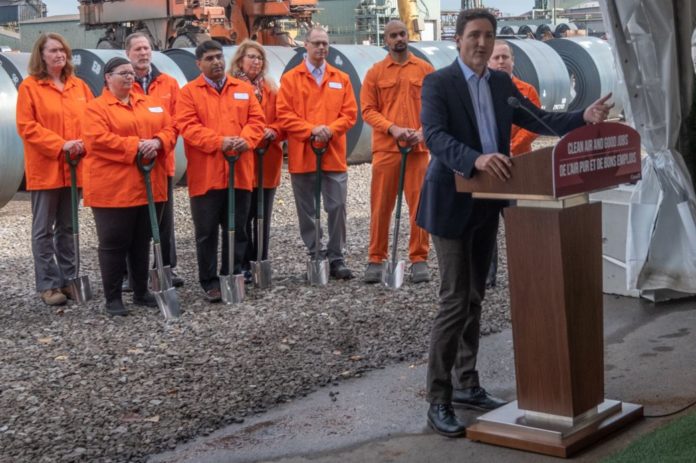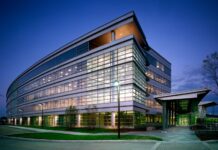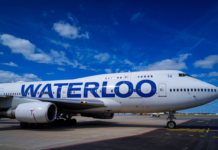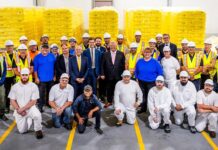Nearly $2 billion investment will significantly reduce carbon emissions by 2028
ArcelorMittal Dofasco has officially launched a nearly $2 billion transformation to be the first integrated steel mill in North America, and among the first in the world, to eliminate coal-based ironmaking from its operations.
Cokemaking operations and coke-fed blast furnaces that now reduce iron ore to liquid will be replaced by state-of-the-art electric arc furnaces (EAFs) that are fed with direct reduced iron (DRI) produced on-site. It all adds up to reducing carbon emissions by approximately 3 million tonnes. That is the equivalent of taking 725,000 internal combustion engine cars off the road or planting 138 million trees.
The massive decarbonization effort is supported by $400 million from the federal government and $500 million from the province. Public-private partnerships are critical to climate change response.
“For our future, there is no better example of clean Canadian innovation pointing the way forward,” said Prime Minister Justin Trudeau during a ceremonial ground-breaking in October.
“ArcelorMittal Dofasco is the world’s first major steelmaker to move to cleaner steel. That is a huge competitive advantage in a world where customers are demanding that steel be as clean as possible. Decarbonization is not only the right thing to do, it’s the smart and competitive thing to do.”
The project also delivers several other environmental benefits with the elimination of cokemaking and coalbased ironmaking. It is an incredibly complex initiative affecting massive and interconnected facilities, with a work schedule that is expected to include more than 11,000 items.
Dofasco is a key producer of complex grades of steel for automotive, construction and manufacturing, energy, packaging and tubular applications. As it ramps up new processes, it must continue to meet product qualifications for customers – an enormously technical and complex task.
“Being a high value-added supplier of steel is the defining aspect of Dofasco, so it is critical that we defend that position in the marketplace,” said Rob Marzetti, program manager of the decarbonization initiative.
“At the same time, demand is growing for green steel and Dofasco will be well positioned to grow that market share with this transition to low-carbon production.”
ArcelorMittal has committed to reduce the carbon intensity of the steel it produces worldwide by 25 per cent by 2030 and to be net zero by 2050.
The decarbonization initiative is the latest in a 110-year history of innovation at the company, says Ron Bedard, CEO of the Hamilton plant.
“I am beyond proud of the employees at ArcelorMittal Dofasco who design, manufacture, and deliver smarter steels for people and planet. The foundation for this project can be found in the contributions that more than 50,000 proud, hardworking Dofasco employees have made over the past 110 years and continue to make today.”
On-site construction work will begin in January with the demolition of a decommissioned coke plant to make room for the new DRI plant.
Construction will become visible in 2024 as the DRI structure begins to take shape, then construction of the EAF will follow.
When all construction is complete in 2026, a 12 to 18-month transition phase will begin in which both the existing and the new steelmaking streams will be active. Existing operations will then be wound down by 2028.
In addition to engineering and design for the massive construction project, and a retraining program for employees that is expected to log 160,000 collective hours, ArcelorMittal Dofasco is undertaking research for future use of clean technologies and fuels such as hydrogen, biocarbon, and technologies like carbon capture utilization and storage.
















